Physics in the Nursery: Baby Oil and Water
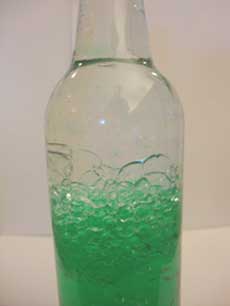
Did you know that even in a baby’s room you can find physics? Crying babies and quiet places don’t always mix and neither do baby oil and water, two common things in a nursery. But why doesn’t oil mix with water? Try this fun experiment to explore what happens when water meets oil.
What you Need
- 1 jar or clear plastic water bottle
- Baby oil or mineral oil (They are the same thing)
- Food coloring
- Water
What to Do
- Fill the jar or bottle halfway full with water.
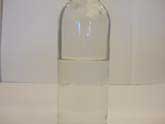
- Add one or two drops of food coloring to the water, until desired color is achieved.
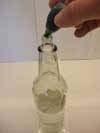
- Put a cap on the top and shake the bottle to mix the food coloring in.
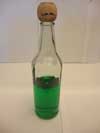
- Remove the cap and place a funnel (you can make one of these out of paper) in the top of the jar. Then, add the baby oil until the jar is full.
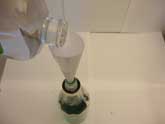
- Place the cap on the top of the bottle and make sure it is screwed on tightly.
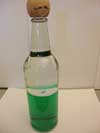
- Turn the bottle over. What happens?
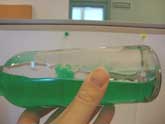
What’s Going On?
Oil and water are two very different types of liquids and to understand what happens when they are combined, you first need to understand each liquid’s properties.
Water molecules are made up of one oxygen atom and two hydrogen atoms. The oxygen atom steals electrons from the hydrogen atoms, making the oxygen atom negative and the hydrogen atoms positive. This makes each water molecule have a positive and negative side, kind of like a magnet. These molecules link together through hydrogen bonds, which cause surface tension. Hydrogen bonds are bonds that occur between the negative side of one water molecule (the oxygen side) and the positive side (the hydrogen side) of another water molecule. Hydrogen bonds hold the water molecules closer together than the bonds between oil molecules.
Because the hydrogen bonds can hold the water molecules closer together than the oil molecules are held to each other, water has a greater density than oil. Density is the amount of stuff you have in a given space. Something that has a high density means that there is a lot of stuff in the space, where as something with a low density has less stuff in the same amount of space.
Objects with a higher density sink when compared to objects of a lower density, which float. Whatever object has the lowest density will float. This explains why when you put a cork in a glass of water, it floats. The cork is less dense than the water. In the case of the baby oil and the water, the baby oil is less dense than the water; therefore, the baby oil floats on top of the water.
Try This!
- Try doing the experiment with differently shaped containers. Do you get the same effect?
- Try mixing vinegar and oil. What happens? Which liquid is the least dense?
- Combine water and mineral oil and then add some dish soap. What happens now?
More Information











